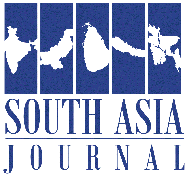
In the aftermath of the recent India-Pakistan military escalation, Turkiye’s unambiguous tilt toward Pakistan marks a significant shift in Ankara’s South Asia calculus—one that departs from its previously hedged “Asia Anew” initiative and enters the realm of full-spectrum securitization. No longer is Turkiye pursuing trade-centric neutrality; it now clearly perceives South Asia through a national security lens, with Pakistan emerging as a critical ally in a volatile neighborhood.
Turkiye’s strategic realignment is not simply about bilateral affinity; it is rooted in a larger structural transformation. Both Turkiye and Pakistan, once key nodes in the post-Cold War Western security architecture, have found themselves increasingly alienated from NATO-centric defense ecosystems. Turkiye’s purchase of the Russian S-400 air defense system and its subsequent expulsion from the F-35 program laid bare its fraying alliance with the West. Pakistan, meanwhile, abandoned by Washington and hemmed in by Indian lobbying, has had to double down on China and find new strategic partners.
In this mutual abandonment lies opportunity: both states—Turkiye and Pakistan—see each other not merely as defense clients, but as strategic equals bound by ideological and geostrategic symmetry. Turkiye’s posturing during and after the crisis, including reported (though officially denied) military assistance flights, was one of the loudest expressions of alliance witnessed in the region. For India, this development poses a diplomatic dilemma, one it appears unprepared to confront systematically.
Turkiye’s previous ambiguity toward Pakistan-India dynamics was transactional, aiming to secure gains from both sides. Ankara long tried to strike a balance: advocating strategic ties with India while offering rhetorical support to Pakistan. However, repeated rejections from New Delhi and the revocation of Kashmir’s special status in 2019 precipitated a shift. Turkish President Recep Tayyip Erdogan’s vocal support for Kashmir and his criticism of Indian actions positioned Ankara on Pakistan’s side of the regional fault line—consciously and permanently.
Since 2022, India has responded with classic counter-alignment behavior. It deepened defense cooperation with Turkiye’s regional rivals—Greece, Cyprus, Iran, and Israel—hoping to create diplomatic disincentives for Turkiye’s South Asian incursions. But this geopolitical balancing act has only hardened Ankara’s resolve. Instead of deterring Turkiye, India’s cold-shouldering has driven Ankara further into Pakistan’s orbit, culminating in coordinated stances on issues ranging from Kashmir to counterterrorism narratives.
India’s failure to respond meaningfully to Turkiye’s reorientation is rooted in its own doctrinal confusion. Under Narendra Modi, India has shifted from the cooperative regionalism of the Gujral Doctrine to a hyper-realist “India First” policy—an approach that paradoxically leads to “India Alone.” This shift reflects a strategic myopia wherein regional cooperation is sacrificed for unilateral assertiveness. India’s withdrawal from SAARC, its minimal presence in regional forums, and its preference for bilateralism over multilateral consensus reflect a state seeking hegemony rather than harmony.
But as India pivots inward—obsessed with narratives of civilizational supremacy and postcolonial self-reliance—it finds itself increasingly isolated. Its neighbors, unable to secure peace or cooperation through New Delhi, are now inviting extra-regional actors like Turkiye and China. This de facto erosion of Indian regional leadership undermines its long-standing aspiration to be seen as South Asia’s pivot.
India’s absence from the G7 Summit in Canada and its increasingly brittle relationship with Canada, France, and Germany point to another reality: New Delhi’s muscular nationalism is losing resonance in Western liberal capitals. Turkiye’s rising credibility in these same capitals, especially in the context of NATO’s flanks, makes it a viable alternative interlocutor in South Asia.
India’s lack of a coherent Turkiye policy is a symptom of its broader diplomatic rigidity. Its approach remains reactive—driven by grievance, not grand strategy. While Turkiye operationalizes a foreign policy anchored in neo-Ottoman pragmatism and forward-leaning security engagement, India remains constrained by its desire to control regional narratives and deny adversaries legitimacy. This is no longer sustainable. Moreover, Turkiye’s growing partnerships in South Asia—beyond Pakistan, to include Bangladesh and even Maldives—demonstrate an intent to cultivate long-term influence. Unlike the transactional Gulf states, Turkiye’s engagement with South Asia is layered, ideological, and persistent.
The strategic decoupling between India and Turkiye in South Asia is no longer hypothetical—it is institutionalized. With Turkiye openly siding with Pakistan, the space for neutrality has shrunk. India must now decide: Will it continue to chase tactical superiority at the cost of strategic relationships, or recalibrate its regional policy to reclaim its waning influence? South Asia no longer belongs to India’s imagination alone. The region is now contested, layered, and globalized. And as Turkiye and Pakistan deepen their alignment, New Delhi must recognize that a new multipolar South Asia is already underway.
